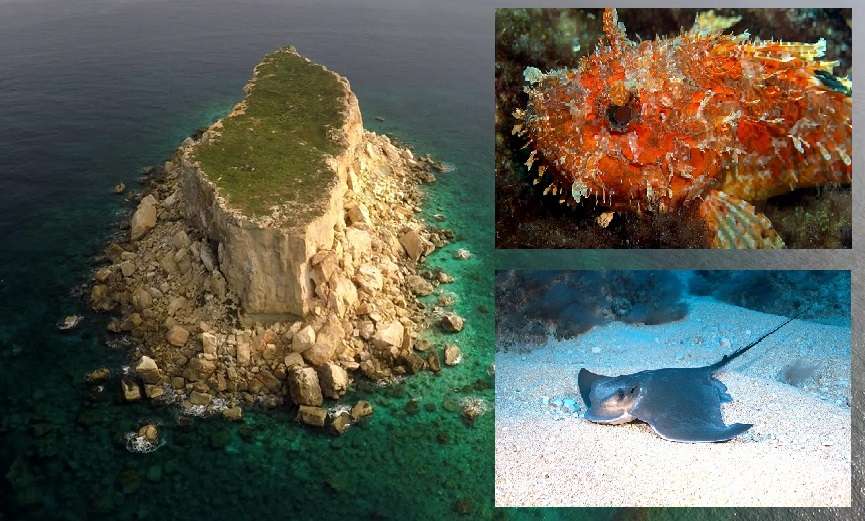Table of Contents
ToggleFilfla: Malta’s Mysterious Islet of Legends and Nature
ust 5 kilometers off the southern coast of Malta lies a tiny, rugged islet that has intrigued locals, historians, and nature lovers for centuries—Filfla. Despite its small size, only about 0.06 km², Filfla carries a big story. Steeped in myths, layered with history, and brimming with ecological importance, this uninhabited limestone rock remains one of the most mysterious parts of the Maltese archipelago.
The Origins of Filfla
Geologically, Filfla is part of the same limestone composition that forms much of the Maltese Islands. It is believed that the islet was once much larger, but centuries of erosion, earthquakes, and natural forces reduced it to its present size. Surrounding it are two smaller rocks—Filfoletta and another unnamed rock—making the site all the more dramatic against the deep blue Mediterranean backdrop.
The name “Filfla” comes from the Arabic word for peppercorn, a nod to the island’s round, pebble-like shape. This etymology also points to Malta’s long history as a cultural crossroads between Europe, North Africa, and the Middle East.

Legends and Folklore
Filfla has inspired countless legends among the Maltese people. One popular folk tale says that the islet was thrown into the sea by a giant who was angered at the Maltese villagers. Another story claims that witches used to live on Filfla, holding midnight gatherings that frightened sailors passing by.
Perhaps the most striking legend is that Filfla was once home to a chapel, which sank beneath the sea after a great storm—a symbolic tale often used in local storytelling to highlight divine power and human fragility. While there is no evidence of a chapel on Filfla itself, these myths have helped cement the islet’s reputation as a place of mystery and awe.
A Military Past
Though uninhabited, Filfla was not always left in peace. During the British colonial period, the Royal Navy used the islet for target practice. From the late 19th century up until 1971, Filfla was regularly bombarded as part of military training exercises. This left the islet scarred and littered with unexploded ordnance.
In 1980, the Maltese government officially declared Filfla a nature reserve, banning all forms of human activity—including fishing within one nautical mile of the islet. The law was passed not only to protect the unique ecosystem but also to safeguard visitors from potential dangers caused by the old military shells.

Filfla’s Unique Wildlife
Today, Filfla is recognized for its ecological value. Despite its barren and inhospitable appearance, the islet is home to species that thrive only in this isolated environment. The most famous is the Filfla lizard (Podarcis filfolensis filfolensis), a subspecies found nowhere else on Earth. These small reptiles have adapted to the harsh, rocky terrain and are a symbol of Malta’s natural resilience.
Filfla is also a vital seabird sanctuary. Large colonies of European storm petrels, yellow-legged gulls, and Cory’s shearwaters use its cliffs as breeding grounds. The surrounding waters are equally rich, supporting diverse marine life, making the area a hotspot for marine conservation.
Filfla as a Symbol
In many ways, Filfla is more than just an islet. For the Maltese, it symbolizes endurance, mystery, and identity. It is a reminder of Malta’s layered history—where myth meets fact, and where human activity collides with the forces of nature.
In recent years, efforts to raise awareness about Filfla’s importance have grown. Local NGOs, schools, and tour guides highlight the islet in cultural and environmental narratives. While you cannot step foot on Filfla, its presence in Maltese culture and imagination is deeply felt.
Filfla may be small, but its significance looms large. It is a place where geology, history, myth, and ecology converge—an uninhabited outpost that continues to fascinate locals and visitors alike. For travelers exploring Malta, simply catching sight of Filfla can feel like witnessing a piece of living legend, floating on the horizon of the deep Mediterranean Sea.

Visiting Filfla: What You Should Know
While Filfla is tantalizing to see from afar, access to the islet itself is strictly prohibited to protect its delicate ecosystem. Tourists can, however, admire the islet from several stunning vantage points on Malta’s southern coast.
One of the best spots is Ħaġar Qim and Mnajdra Temples, UNESCO World Heritage Sites that overlook Filfla. From here, visitors not only get a glimpse of Malta’s prehistoric past but also the dramatic seascape with Filfla on the horizon. Another excellent viewpoint is Wied iż-Żurrieq, a small fishing hamlet famous for its Blue Grotto boat tours. On a clear day, the sight of Filfla rising out of the Mediterranean is unforgettable.
For divers, the waters around Wied iż-Żurrieq and the Blue Grotto offer spectacular underwater experiences. Though diving directly around Filfla is restricted, nearby sites provide glimpses of the same pristine marine environment.



